Bananas are a nutrient-rich fruit that may support heart health, digestion, and energy levels. Packed with essential vitamins, minerals, and fiber, bananas are one of the most widely consumed fruits worldwide. Understanding the health benefits of bananas can help you make informed dietary choices that promote overall wellness. This article explores science-backed advantages, potential cautions, and practical ways to include bananas in a balanced diet — all grounded in current research and nutrition guidelines.
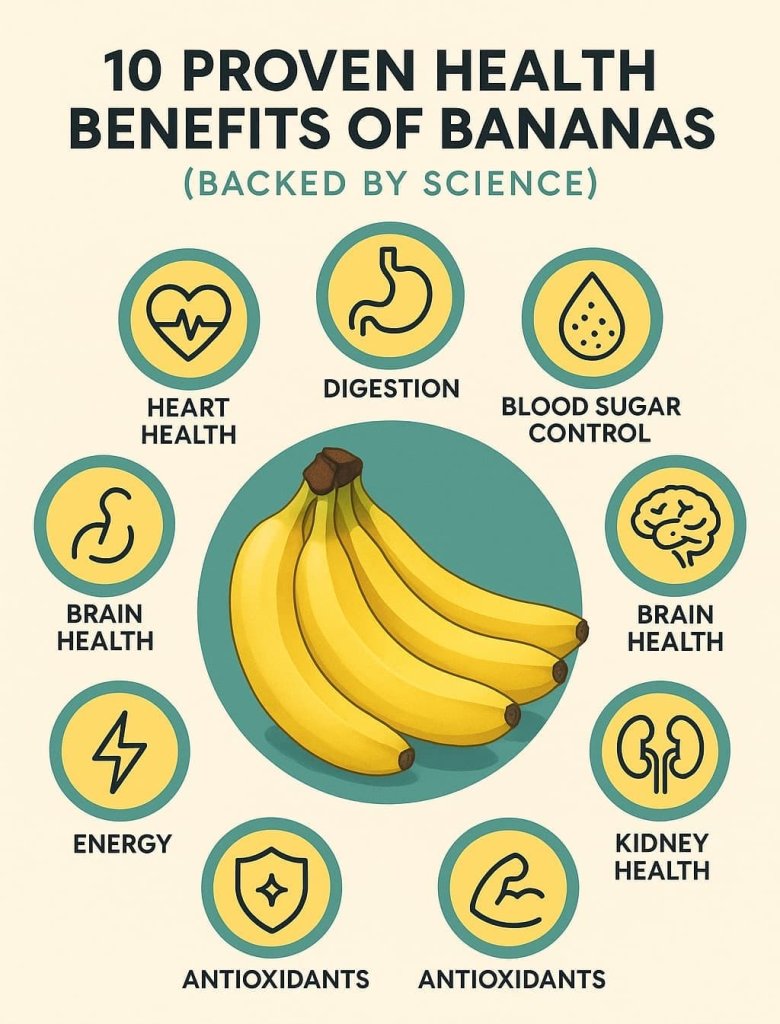
What Are Bananas? (Overview and Nutrition Profile)
Bananas (Musa spp.) are tropical fruits belonging to the Musaceae family, cultivated in more than 135 countries across Asia, Africa, and Latin America. They are among the world’s most consumed fruits due to their natural sweetness, creamy texture, and year-round availability. The banana plant is technically a large herb, and its fruit develops from the flower of the plant without fertilization, making it a “parthenocarpic” fruit.
Origin and Common Types
Bananas are believed to have originated in Southeast Asia, particularly in the Malay Archipelago and Papua New Guinea, before spreading globally through trade routes. Today, they’re a dietary staple in both tropical and temperate regions.
The most common varieties include:
- Cavendish Banana: The standard yellow banana available in most grocery stores, known for its mild sweetness.
- Plantain (Cooking Banana): Larger, starchier, and usually eaten cooked; popular in African, Caribbean, and Latin American cuisines.
- Red Banana: Sweeter, with reddish-purple skin and a soft, creamy texture.
- Burro and Apple Bananas: Smaller varieties with tangy or apple-like flavor notes.

Nutritional Profile (per 100 g of raw banana)
According to the USDA FoodData Central (2024), bananas provide a balanced combination of carbohydrates, fiber, vitamins, and minerals essential for overall wellness.
| Nutrient | Amount (per 100 g) | % Daily Value (DV) |
|---|---|---|
| Calories | 89 kcal | — |
| Carbohydrates | 22.8 g | 8% |
| Dietary Fiber | 2.6 g | 9% |
| Sugars (natural) | 12.2 g | — |
| Protein | 1.1 g | 2% |
| Fat | 0.3 g | <1% |
| Potassium | 358 mg | 8% |
| Magnesium | 27 mg | 7% |
| Vitamin C | 8.7 mg | 10% |
| Vitamin B6 | 0.4 mg | 20% |
| Manganese | 0.3 mg | 14% |
Why Bananas Are a Global Dietary Staple
Bananas are a nutrient-dense, energy-rich, and affordable food, making them a vital part of diets worldwide. Their portability and ease of digestion make them ideal for people of all ages — from children to athletes. The fruit’s natural balance of carbohydrates, potassium, magnesium, and vitamin B6 supports daily energy needs, muscle function, and metabolic health.
As emphasized by the Harvard T.H. Chan School of Public Health, bananas provide valuable nutrients and fiber while being naturally low in fat and sodium — characteristics that align with modern dietary guidelines for maintaining overall health.
10 Proven Health Benefits of Bananas (Backed by Science)
Bananas are a versatile, nutrient-packed fruit that can play a role in supporting heart health, digestion, and energy balance. Below are ten research-based benefits that highlight how bananas contribute to overall wellness when included as part of a balanced diet.
1. Supports Heart Health

Bananas are an excellent source of potassium, an essential mineral that helps regulate blood pressure and maintain proper heart rhythm. Adequate potassium intake is linked to a reduced risk of stroke and cardiovascular disease, according to the Cleveland Clinic (2024). Their naturally low sodium levels also make them ideal for promoting a heart-healthy diet, supporting the American Heart Association’s recommendation to limit sodium and increase potassium-rich foods.
2. Promotes Digestive Health
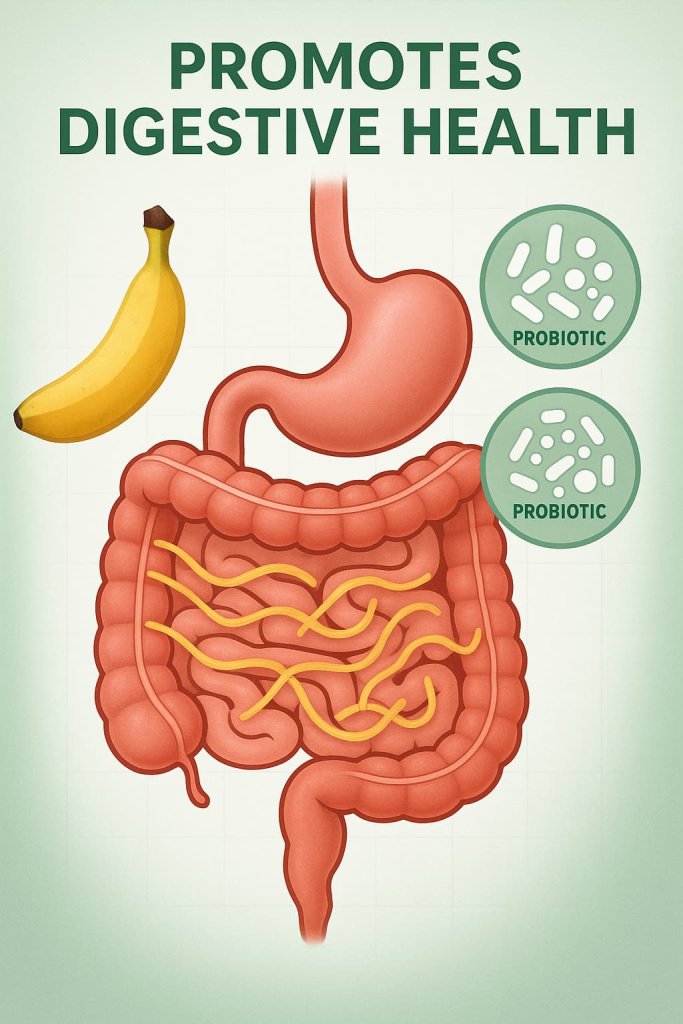
Bananas contain soluble fiber (particularly pectin) and resistant starch, both of which play key roles in digestive wellness. According to the Harvard T.H. Chan School of Public Health, these fibers feed beneficial gut bacteria and may help maintain bowel regularity. Regular consumption of bananas may support a balanced gut microbiome, contributing to improved digestion and nutrient absorption.
3. Helps Maintain Healthy Blood Sugar Levels
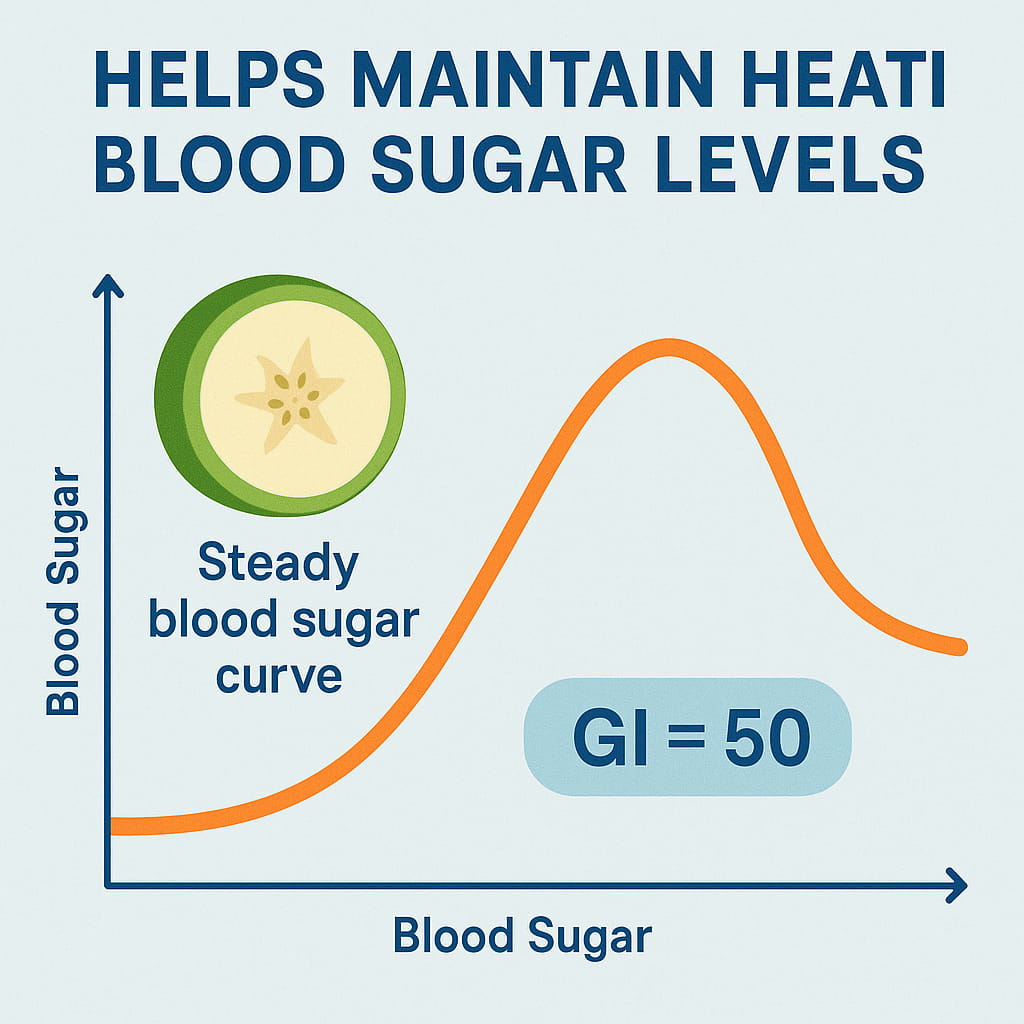
Unripe or slightly green bananas contain resistant starch, a type of carbohydrate that slows glucose absorption and may support balanced blood sugar levels. As noted by the National Institutes of Health (NIH), foods high in fiber and resistant starch can promote insulin sensitivity and help moderate post-meal glucose responses. For individuals seeking stable energy, bananas offer a naturally low-glycemic option when eaten in moderation.
4. Provides Natural Energy

Bananas are composed mainly of natural sugars — glucose, fructose, and sucrose — combined with fiber that moderates sugar absorption. This makes them an ideal pre- or post-workout snack for sustained energy. Research from the Cleveland Clinic confirms that bananas replenish glycogen stores efficiently and support electrolyte balance, especially for athletes or those engaging in regular physical activity.
5. Rich in Antioxidants

Bananas provide vitamin C, dopamine, and polyphenolic compounds, all of which act as antioxidants that help reduce oxidative stress. These compounds play a key role in protecting cells from free radical damage and supporting long-term health. According to Healthline, antioxidant-rich foods like bananas may help protect against chronic diseases linked to oxidative stress.
6. Supports Mood and Brain Function
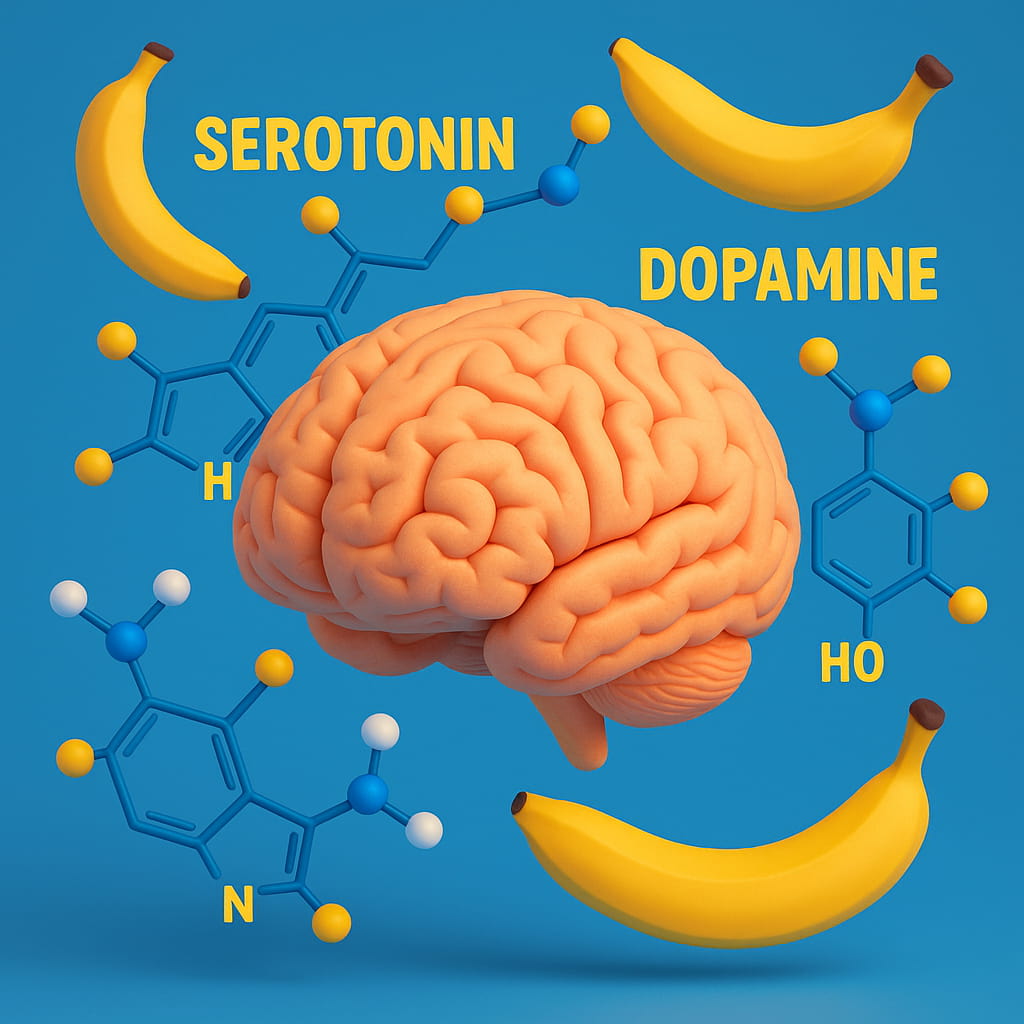
Bananas are rich in vitamin B6, which the body uses to produce neurotransmitters such as serotonin and dopamine — key regulators of mood and cognitive function. The NIH Office of Dietary Supplements notes that adequate B6 intake supports normal brain development and function. Including bananas in your diet may contribute to improved mental clarity and emotional balance.
7. Promotes Muscle and Nerve Function
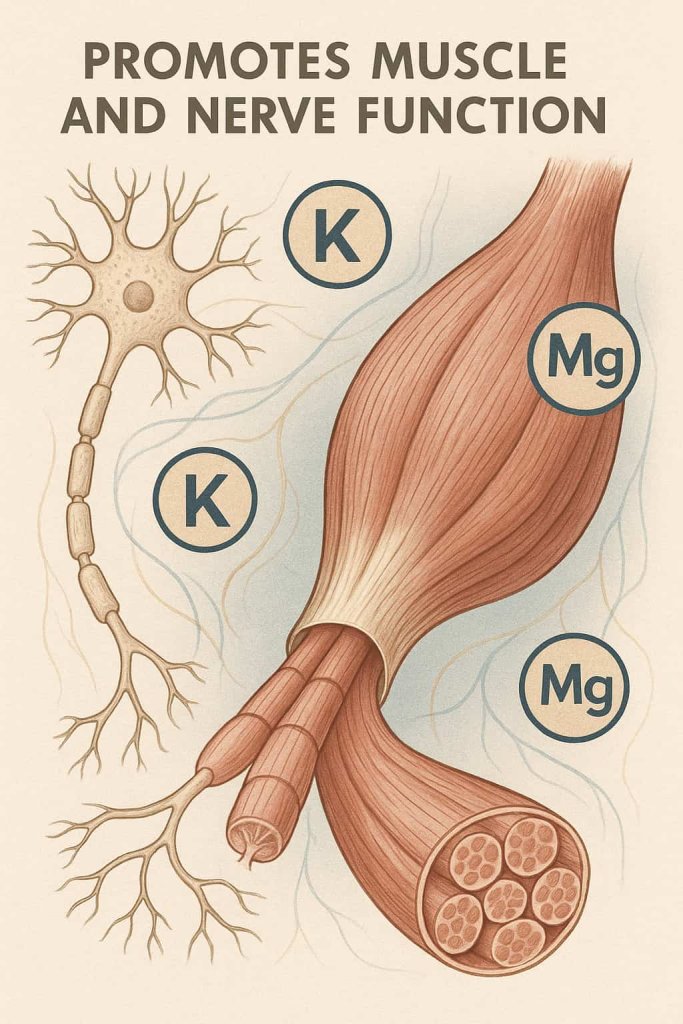
Bananas are naturally rich in potassium and magnesium, two minerals essential for healthy muscle contraction and nerve communication. Potassium helps regulate the electrical impulses that control muscle movement and heart rhythm, while magnesium supports muscle relaxation and energy metabolism.
According to the Mayo Clinic, low potassium levels (hypokalemia) can cause muscle weakness, cramps, fatigue, or irregular heartbeats — underscoring the importance of maintaining proper electrolyte balance. Eating potassium-rich foods like bananas may help support normal muscle function, prevent cramps, and promote efficient nerve signaling, especially after sweating or intense physical activity.
Incorporating bananas into post-workout meals or snacks provides a simple, natural way to restore key electrolytes and support muscle recovery without relying on processed supplements or sports drinks.
8. Aids in Weight Management
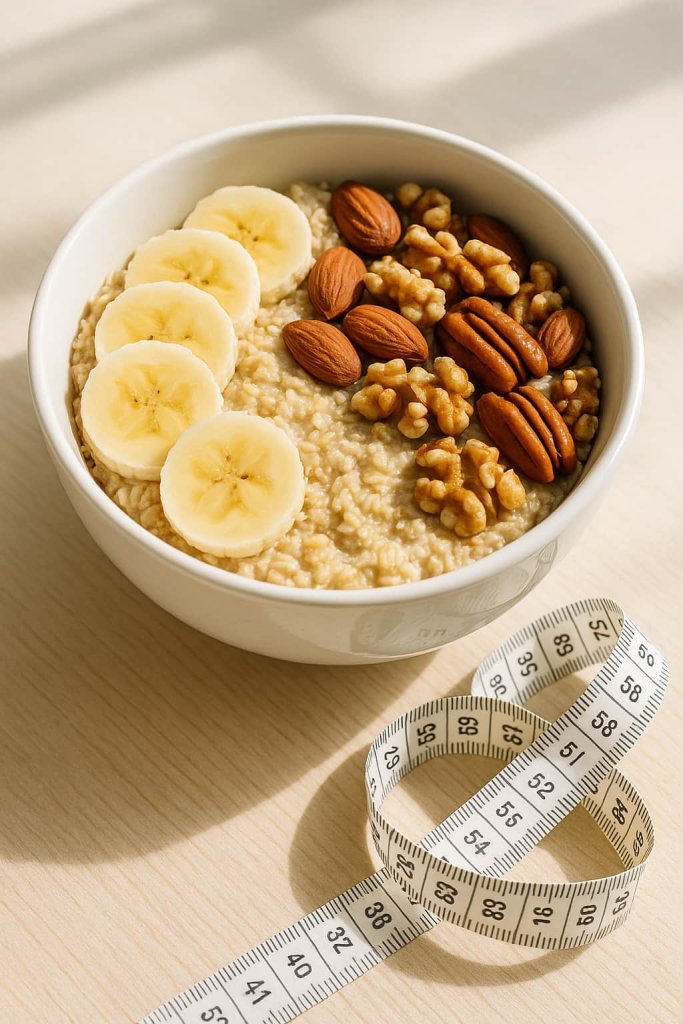
Bananas are naturally low in calories and rich in dietary fiber, making them a smart addition to a balanced diet for supporting weight management. A medium banana contains about 110 calories and 3 grams of fiber, which helps promote satiety and reduce overeating. According to Harvard Health Publishing, fiber-rich foods help you feel full for longer and may support healthy weight control by stabilizing energy intake throughout the day.
Unripe or slightly green bananas contain resistant starch, a type of fermentable fiber that functions similarly to soluble fiber — slowing digestion, moderating blood sugar response, and promoting fullness. Research published in the National Library of Medicine (PMC) highlights that resistant starch may aid metabolic balance and enhance satiety when consumed regularly as part of a calorie-conscious diet (PMC Nutrition, 2021).
Replacing high-calorie, processed snacks with naturally sweet, fiber-rich bananas may support sustainable weight maintenance. Pairing bananas with protein or healthy fats, such as nut butter or yogurt, further improves satisfaction and helps maintain steady energy levels.
9. Supports Kidney Health
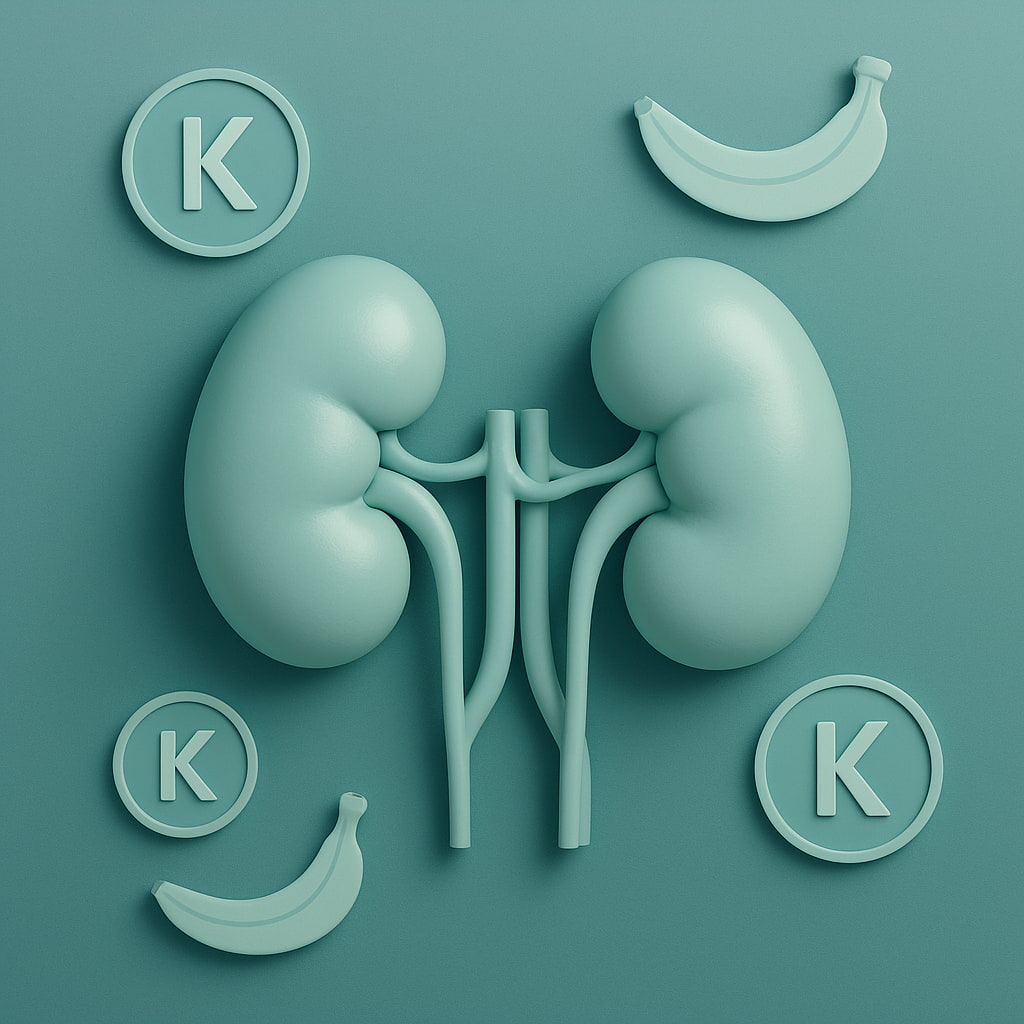
Consuming potassium-rich foods like bananas may contribute to kidney health and reduce the risk of kidney stones. Research summarized by the NIH Office of Dietary Supplements shows that dietary potassium helps the kidneys filter waste efficiently. However, individuals with chronic kidney disease should seek medical advice before significantly increasing potassium intake.
10. May Support Exercise Recovery
Bananas combine carbohydrates, potassium, and magnesium to restore energy and electrolytes post-exercise. A study published in PLOS One (2023) found that bananas provided recovery benefits comparable to sports drinks, improving endurance and muscle function. Their natural nutrient mix supports glycogen replenishment and hydration balance, making them a practical choice for athletes and active individuals.
How to Add Bananas to Your Diet
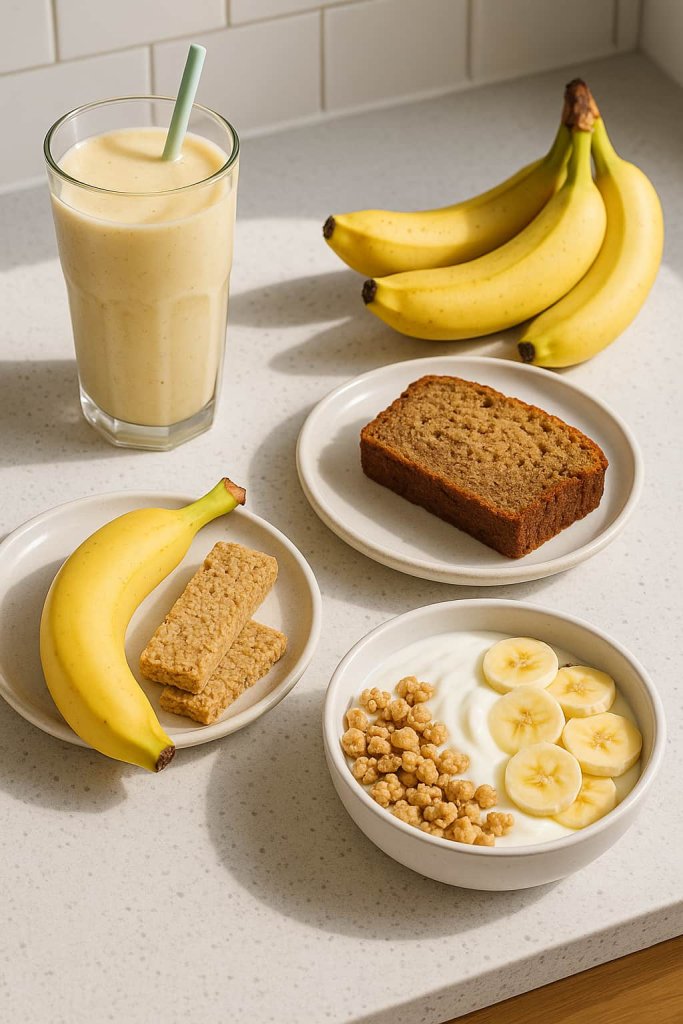
Bananas are one of the most versatile fruits, making them easy to include in daily meals and snacks. Their natural sweetness, smooth texture, and nutrient balance make them ideal for both sweet and savory preparations. Whether ripe or unripe, bananas can fit seamlessly into a balanced diet that supports long-term health.
Practical and Actionable Ways to Enjoy Bananas
- Breakfast Boost: Slice ripe bananas over oatmeal, cereal, or Greek yogurt for extra fiber, potassium, and natural sweetness.
- Smoothies: Blend bananas with leafy greens, milk, or protein powder for a nutrient-rich smoothie that supports energy and hydration.
- Healthy Snacks: Pair a banana with peanut butter, almond butter, or cottage cheese for a balanced combination of carbs, protein, and healthy fats.
- Baking Substitute: Use mashed ripe bananas as a natural sweetener or egg substitute in muffins, pancakes, or banana bread.
- Pre-Workout Snack: Eat a medium banana 30–60 minutes before exercise for a steady energy source.
- Post-Workout Recovery: Combine a banana with a protein source (like yogurt or a smoothie) to help replenish glycogen stores and electrolytes.
- Green Bananas (Unripe): Boil or bake green plantains as a starchy side dish — they’re rich in resistant starch, which supports digestive balance.
Incorporating bananas into meals emphasizes dietary variety, not treatment. Consuming them alongside vegetables, lean proteins, and whole grains forms part of an overall balanced dietary pattern consistent with the U.S. Department of Agriculture’s Dietary Guidelines for Americans (2025).
Possible Side Effects and Precautions
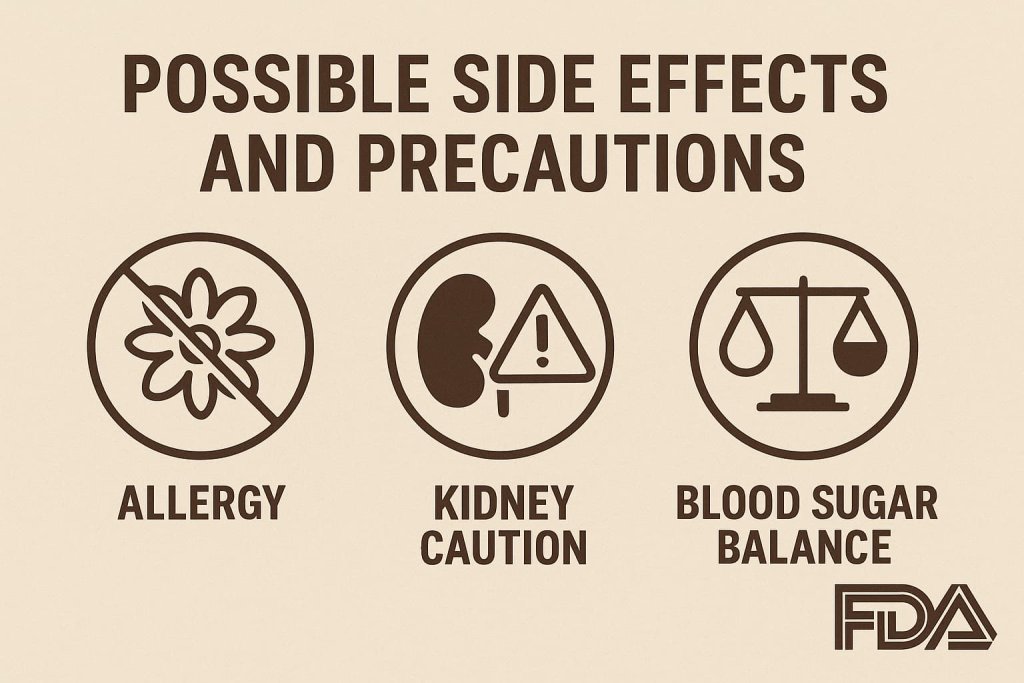
Bananas are generally safe and well-tolerated, but certain individuals should practice moderation depending on their health conditions or sensitivities.
- Potassium Sensitivity and Kidney Conditions:
People with chronic kidney disease (CKD) or impaired potassium regulation should limit high-potassium foods. The NIH Office of Dietary Supplements notes that excess potassium can accumulate when kidney function is reduced, potentially leading to hyperkalemia (high potassium levels). - Latex-Fruit Allergy:
Some individuals with a latex allergy may also react to bananas due to similar plant proteins, a condition known as latex-fruit syndrome. Symptoms may include mild itching, hives, or swelling around the mouth. For more information, see the U.S. Food and Drug Administration (FDA) – Food Allergies. - Blood Sugar Considerations:
Ripe bananas have a higher sugar content than green ones. Pairing bananas with a protein or healthy fat (e.g., nuts or yogurt) helps slow glucose absorption and support stable energy.
In general, moderation and individualized dietary planning are key. Bananas can safely fit into most balanced diets when eaten in appropriate portion sizes.
Storage and Food Safety Tips
Proper storage and safe handling of bananas are essential for preserving their freshness, flavor, and nutritional quality while minimizing food waste and preventing contamination. Following evidence-based guidelines from the U.S. Department of Agriculture (USDA) and FoodSafety.gov helps ensure that bananas remain safe to consume throughout their shelf life.
- Ripening: Keep unripe (green) bananas at room temperature between 68–72 °F (20–22 °C) until they turn yellow and develop brown speckles, indicating natural ripening. Avoid sealing green bananas in plastic bags, as this traps moisture and accelerates spoilage.
- Refrigeration: Once ripe, bananas can be stored in the refrigerator to slow further ripening. While the peel may darken, the fruit inside remains firm and sweet. Refrigeration can extend shelf life by several days without reducing nutritional value.
- Freezing: To preserve bananas long term, peel and slice them before freezing. Store in airtight freezer-safe bags or containers for up to three months. Frozen bananas work well for smoothies, baking, and desserts.
- Avoid Cross-Contamination: Always separate fresh produce from raw meat, poultry, and seafood during storage and preparation. Wash hands, utensils, and cutting surfaces before and after handling bananas or any other fresh fruit to reduce the risk of bacterial transfer.
- Ethylene Gas Awareness: Bananas naturally emit ethylene gas, which speeds up ripening in nearby fruits and vegetables. To prevent premature spoilage, store bananas separately from other produce such as apples or avocados.
For official safety guidance on proper produce storage and handling, visit the USDA Food and Nutrition Service – Storing Fresh Produce and FoodSafety.gov – 4 Steps to Food Safety.
By following these USDA-recommended storage and handling steps, you can keep bananas fresh longer, reduce food waste, and ensure safe consumption as part of a healthy, balanced diet.
Frequently Asked Questions (FAQs)
1. Are bananas good for diabetics?
Yes, in moderation. Bananas have a low to medium glycemic index and can fit into a balanced diabetic meal plan when paired with protein or fiber.
2. Can bananas help with digestion?
Bananas contain pectin and resistant starch, which support healthy digestion and promote a balanced gut microbiome.
3. Should I eat bananas before or after a workout?
Both! A banana before exercise provides quick energy, while eating one afterward helps restore electrolytes and glycogen.
4. Can bananas cause constipation?
Ripe bananas generally support bowel regularity due to their fiber content, though unripe bananas may firm stool due to resistant starch.
5. Are green bananas healthier than ripe ones?
Green bananas are higher in resistant starch, while ripe ones have more antioxidants and natural sugars. Both can be part of a nutritious diet.
6. How many bananas can I eat per day?
Most healthy adults can enjoy 1–2 medium bananas daily as part of a varied diet, according to current nutrition recommendations.
7. Can I eat bananas if I’m watching my weight?
Yes. Their fiber content supports fullness, and when used in place of higher-calorie snacks, bananas can help manage total calorie intake.
Conclusion
Bananas are one of nature’s most convenient and nutrient-dense foods — rich in potassium, fiber, vitamin B6, and antioxidants that support heart, digestive, and muscular health. Their affordability, versatility, and global availability make them a staple for balanced nutrition.
Including bananas as part of a whole-food, plant-forward diet may support long-term wellness and sustainable eating habits. Enjoy them fresh, blended, or cooked — as part of a healthy lifestyle rather than a treatment approach.
This content is for informational purposes only and not medical advice.
References:
